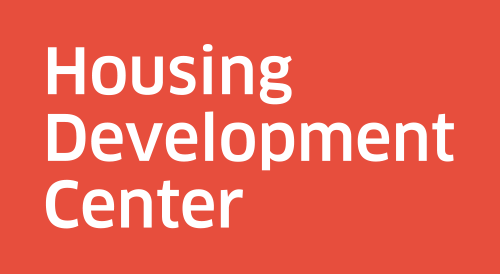Can Modular Construction Make Housing Resources Stretch Farther?
Transition Projects’ Low Income Single Adult Housing (LISAH) project, designed by Holst Architecture, will use modular construction to create a 72-unit affordable housing community serving individuals at risk of homelessness in North Portland.
As a construction project manager at HDC, I work with design and construction teams to develop affordable homes for people whose housing needs aren’t met by the market. Like many of my colleagues, I believe that finding creative ways to build durable, high-quality homes at lower cost is a critical challenge facing our our industry.
If we can make scarce resources stretch farther, we can provide more affordable homes for people who need them.
That’s why, two years ago, I set out to investigate a question that has long interested me: Could modular construction help us meet this challenge?
What is modular construction? Sometimes referred to as offsite construction, it is any method used to design a building from standardized modules (or sections), which are constructed in a controlled environment, transported to their final destination, and assembled on site. Modular construction plants are used to produce everything from single-family homes to mid-rise hotels.
Modular construction is used routinely in many places around the world, but has been slow to take off in the United States. More than five percent of the U.S. population—roughly 18 million people—live in factory-built homes, but relatively few multifamily housing developments in this country use modular construction on a large scale.
For the LISAH project, residential, roof-truss, and stair modules will be fabricated at a plant and assembled on site. Then crews will install cladding and windows.
But multifamily modular construction has seen a recent growth spurt, and I wanted to know: What modular construction services were available to build projects in the region where I work? Could modular construction help affordable housing providers in Oregon and elsewhere produce higher-quality housing, at a lower cost?
What started as a research project I undertook with a peer-learning group turned into a collaborative learning effort, when Meyer Memorial Trust invited me to co-organize a regional summit addressing cost-efficiency in affordable housing development last year.
It became a hands-on investigation when I signed on to manage construction of the Low Income Single Adult Housing (LISAH) project. LISAH, sponsored by Transition Projects, is one of the first multifamily projects in the region to be built mostly offsite. (Update: You can read the story and view photo of the completed LISAH project, now named Argyle Gardens, here.)
Starting this week, I’ll be posting updates from my ongoing research and practice in modular construction to this blog. I’m excited to share my discoveries, and to take part in a widening conversation about using modular construction and other innovative practices to improve efficiency in affordable housing construction.
Earlier this week, I briefly outlined the housing industry’s efficiency problem.
Up next, I’ll offer a quick, holistic look at how modular construction compares to onsite construction in areas such as development and operational cost impacts, labor requirements, and climate impact. (You can look for it on this website or subscribe to HDC’s e-newsletter to have it delivered to your inbox.)
Meantime, check out my slide presentation, Multifamily Housing Solutions Using Modular Construction. It provides technical tips on using modular construction in multifamily housing and includes photos of recent multifamily modular construction projects. If you’re considering using modular on a future project, it may help you get inspired!
Jenn Sharp is a former senior construction project manager at HDC.

